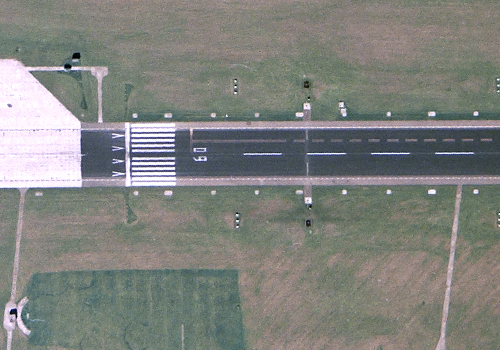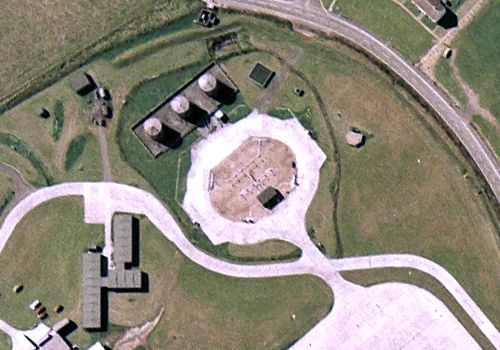Airfields
Modern land-based aircraft are extremely sophisticated and expensive pieces of equipment which require an airfield base to operate from. Military airfields are equipped with electronic systems to communicate with aircraft on runways and assist them in flight; defensive systems to secure their boundaries and airspace; stores of fuel and weapons for replenishing aircraft; structures for storing and maintaining aircraft; and buildings in which to house, feed and train the personnel who carry out all of the airfield's functions. This feature identifies these key areas of a typical military airfield.
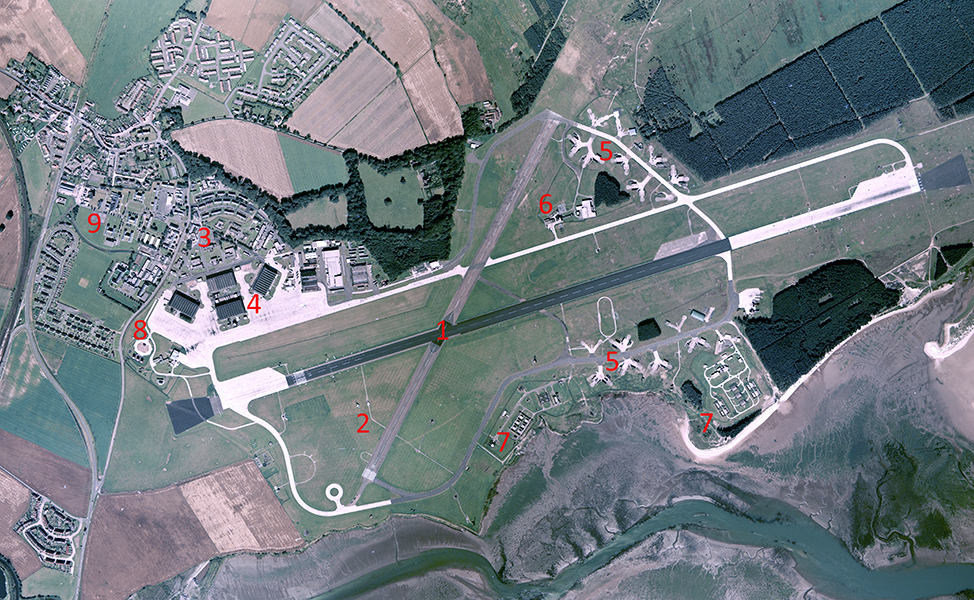
2. Aircraft
The primary function of an airfield is to operate aircraft. The type, variant, quantity and state of readiness of aircraft present on aerial photography will allow the function and operational state of the site to be assessed.
In this image, two Westland Wessex helicopters, in yellow search-and-rescue livery, are visible on hard-standings.
|
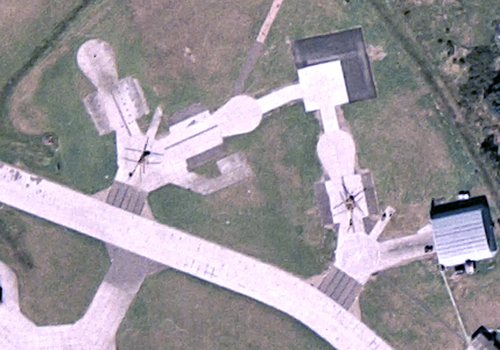 |
3. Security
To control access to the airfield, a guardhouse is provided at the main entrance, where vehicles and visitors are vetted. Security personnel check access permits, operate an access barrier and issue directions to visitors. A continuous security fence encloses the airfield perimeter, often patrolled by armed guards.
In this image, the guardhouse is located at upper-right, and a security fence can be seen running from centre to lower left, between operations buildings and domestic housing.
|
 |
|
A number of earth-reveted picket posts are positioned at key locations within the site, to provide strong-points for defence against attack from the ground. Several Second World War pillboxes also survive around the airfield perimeter, such as that at upper left in this image. Installations for point defence against air attack, such as anti-aircraft artillery (AAA) and surface-to-air missile (SAM) batteries, are also commonly seen at airfields around the world.
The circular feature at lower right is the compass swing base, where the alignment of aircraft compasses is checked. |
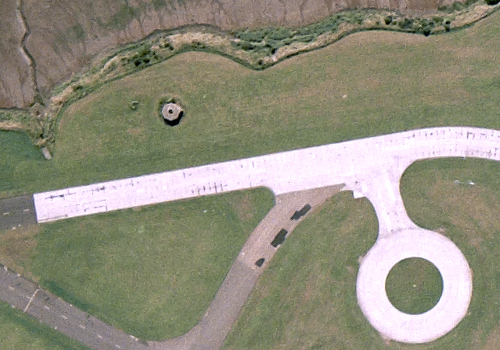 |
4. Technical Areas
Aircraft repair and maintenance is carried out in large sheds called hangars. These have wide sliding doors, to allow aircraft access, and tend to be grouped together, adjacent to aircraft parking aprons. Lighting towers are provided to allow the safe movement of aircraft around the hangars at night.
|
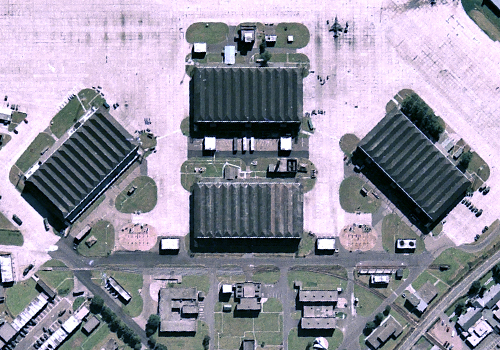 |
| Some specialist technical equipment needs to be sited at a distance from domestic areas of the airfield. Here, two engine de-tuners can be seen on a hardstanding; these are used to test aircraft jet engines. | 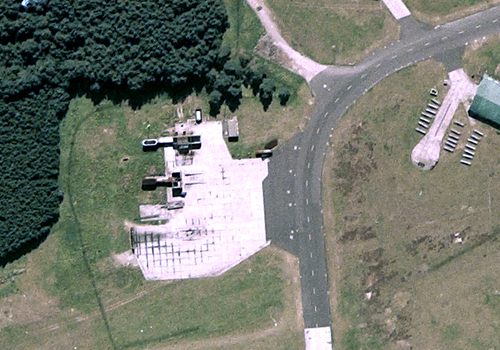 |
| The movement of fuel, weapons and personnel around the extensive perimeter of an airfield requires a number of specialist vehicles, all of which are housed and maintained by the station's Motor Transport section. Here, a variety of fuel bowsers, mini-buses and cars can be seen parked outside garages and workshops. | 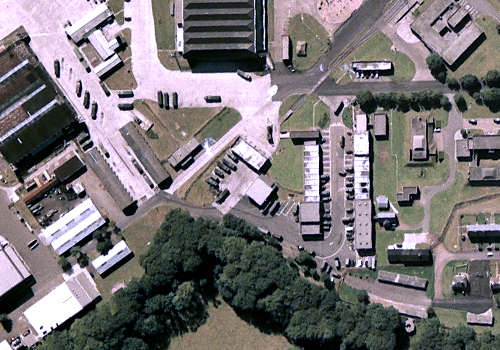 |
5. Dispersals
A dispersal is an aircraft parking area situated away from the main technical site, often with some form of protection for individual aircraft.
In this image, two English Electric Lightning interceptors are parked on hardstandings flanked by blast walls. To offer more protection against enemy air attack, many military airfields house their combat aircraft in Hardened Aircraft Shelters or Hardened Aircraft Bunkers, which can withstand a nearby bomb blast or chemical attack.
|
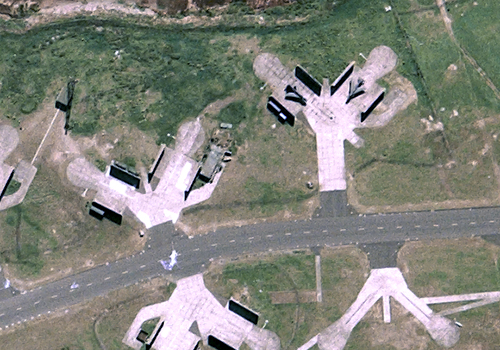 |
|
Situated close to the runway threshold, these two adjoining shelters house armed fighter aircraft assigned to rapid-response air defence duties. This Quick Reaction Alert facility, or Q-shed, is manned around the clock, with the aircraft and crews kept at a high state of readiness.
In this image, two McDonnell Douglas Phantom aircraft are parked adjacent to the shed. |
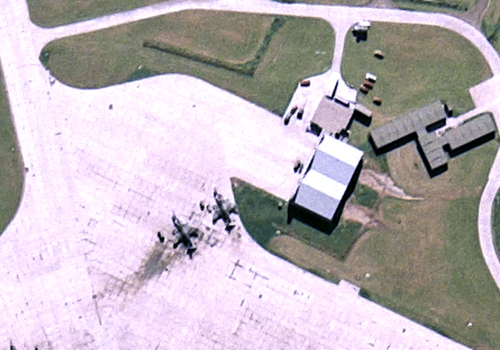 |
6. Air Traffic Control
Sited with an uninterrupted view of the airfield, the Air Traffic Control tower controls all aircraft movements. A signal square is provided in front of the tower, for aircraft without radio, and meteorological instruments are located to the rear. Fire and Rescue crews and emergency vehicles are located in an adjacent building, with direct road access to the runways.
To assist aircraft to manoeuvre safely in crowded skies and bad weather, a variety of electronic navigation aids, instrument landing and precision approach radar systems are available to Air Traffic Control staff.
|
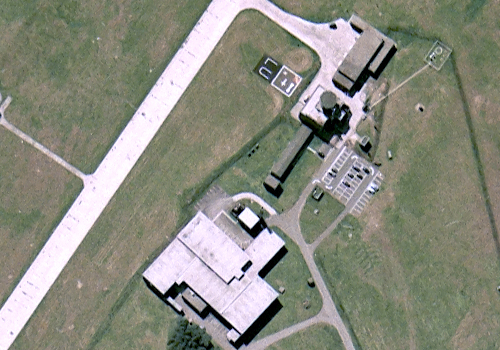 |
7. Munitions Storage
Bombs, ammunition, missiles, explosives and pyrotechnics are stored in a secure compound, located well away from technical and domestic areas of the airfield. The storage buildings are protected by blast walls or earth revetments and are arranged in a symmetrical pattern, well-served by roads. In this image, the storage site is seen to be enclosed by a double security fence.
|
 |
9. Domestic Areas
Airfields are manned by highly-trained personnel who live in barrack accommodation adjacent to the technical area of the base. Barrack blocks often have a regular plan and are situated adjacent to dining, recreation and car-parking facilities.
|
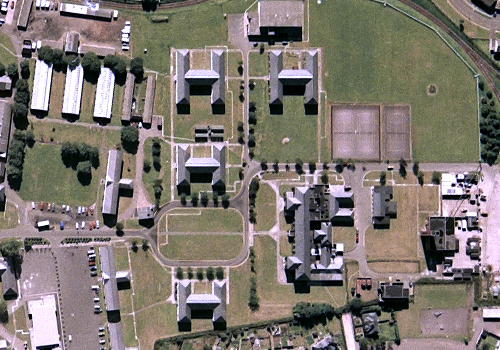 |


